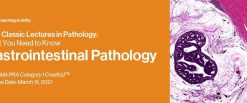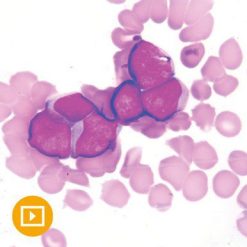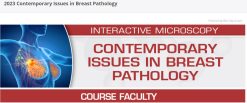Taken together, it is difficult for pathologists to stay current and maintain proficiency in head and neck pathology without supplemental training and education. This course is a terrific opportunity to refine your diagnostic skills with energetic pathologists whose keen eyes, diagnostic acumen, and a modern approach will create an indelible impression.
- Target Audience
This course is designed for general pathologists, practicing surgical pathologists, senior residents and pathologists with special interest in head and neck pathology.
- Learning Objectives
Upon completion of this educational activity, learners will be able to:
- Recognize the updated WHO terminology of salivary gland carcinoma
- Develop a diagnostic approach to the encapsulated follicular-patterned thyroid nodule
- Describe the algorithmic approach to HPV testing in a head and neck cancer
- Develop a diagnostic approach to the “small round blue cell” sinonasal tumor
- Recognize the appropriate differential diagnosis for sinonasal glandular proliferations
Topics:
- Salivary Gland Pathology – Justin Bishop, MD
- Sinonasal Pathology and Oropharyngeal Pathology – James S. Lewis, Jr., MD
- Odds and Ends of Head and Neck Pathology – Lester D.R. Thompson, MD
- Endocrine/Neuroendocrine and Mimics and Soft Tissue Neoplasms of the Head and Neck – Lisa M. Rooper, MD
Original release date: February 8, 2022
Access to this course expires on: December 11, 2024











